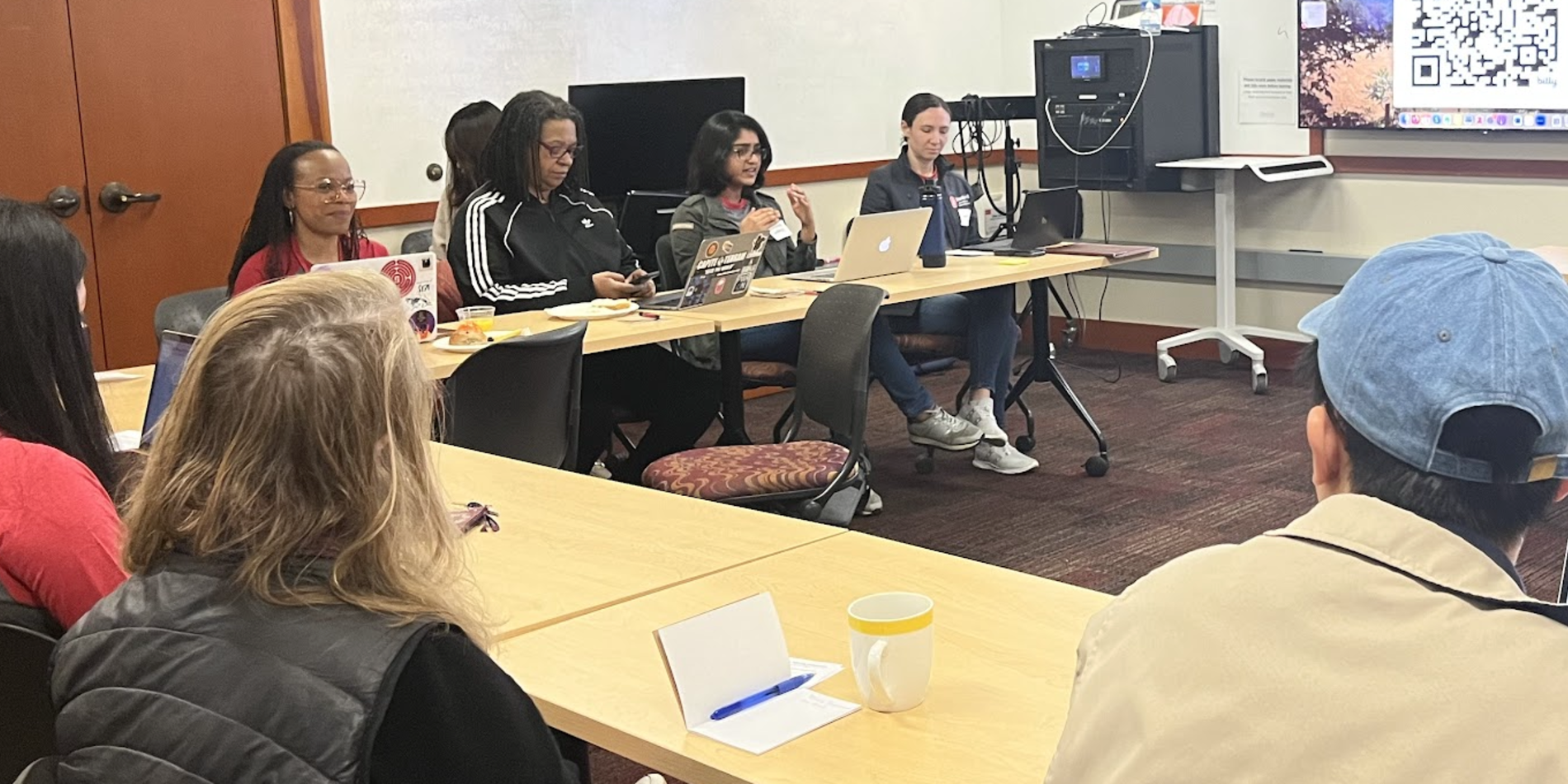Digital Presenting: Oral Communication Tutoring for Online PWR 2 Classes
By John Peterson
“This is my dream job,” says Mya Vinnett, Oral Communications Tutor (OCT) with Stanford’s Oral Comm Program. Mya has been an OCT since fall 2019. As a Communications major with her own YouTube channel and a deep interest in media broadcasting, it is second nature for her to break down how speakers engage their audiences. She loves to watch closely as YouTubers and newscasters -- and PWR 2 students -- adapt their strategies to meet the needs of each new rhetorical situation.
Mya is one of several OCTs who hold appointments at the Hume Center for Writing and Speaking and also partner with PWR 2 teachers who have requested OCT support in the classroom. According to Janet Kim, Tutor Manager at Hume, roughly 60-70% of PWR 2 teachers request tutors be assigned to their classes to do breakout groups, workshops, warm-up sessions, and give feedback to students rehearsing presentations. Teachers and tutors work together at key points during the quarter to offer a two-pronged support system for students learning the finer points of public speaking.
Now that students are preparing for online, often asynchronous, oral presentations, this relationship is shifting.
When the world went into quarantine mode last spring, like many of us, Mya observed how oral communication changed as academic and professional life went digital. As an intern at Facebook over the summer, she saw how meetings that usually would be done in person, especially by top brass such as Mark Zuckerberg and Sheryl Sandberg, had to adjust to the Zoom environment. She and her fellow workers were keenly aware of the challenges speakers faced when talking to a virtual audience. All around her, people were learning to meet new challenges.
“Now, everybody is a student of communication,” Mya says.
And now teachers, tutors, and students are taking what they already know about public speaking and integrating it into new learning environments.
Students now must prepare to speak to audiences that are not in the room with them, and so the process of composing and rehearsing a presentation includes a lot of time speaking not to humans, but to a camera lens built into a computer. Being able to record, redo, and edit offers virtually unlimited chances to get it right, but without a strong sense of live audience presence, it can be hard to know what getting it right means. Teachers and tutors alike are shifting their approaches to meet these new challenges.
In many ways, just having a person who, like a teacher, can act as a guide and audience member is central to this partnership. “OCTs are an extra layer of feedback,” says Doree Allen, founding Director of Stanford’s Oral Communication Program. OCTs who work with teachers get to know the expectations of that individual course. “An OCT working with a teacher starts by asking a lot of questions,” Doree says. “PWR 2 teachers are all so different. OCTs are trained to find out what each teacher is looking for.”
Commonly, OCTs visit class sessions, often on days when they will work with students rehearsing in breakout groups. By listening to how teachers set up activities and articulate their objectives, OCTs see how students are experiencing the instruction. Teachers can tap into this perspective and make adjustments to tailor learning to meet students’ needs.
Now that PWR classes are shorter, OCTs assigned to classes are increasingly offering time with students beyond class. Often, this means working one-on-one or in small groups. Some also work asynchronously by reviewing rehearsal videos and providing written feedback. But live interaction remains invaluable.
According to Helen Lie, a lecturer in the Oral Communications Program who helps train OCTs, the more a student can work with a live audience, the more chance they have to develop their oral communication. “It’s all about air time and practicing,” Helen points out. OCTs learn how to support both live and recorded presentations. In many ways, if a student is rehearsing on Zoom in real time with anyone -- tutor, teacher, or fellow students --- they are essentially giving a continuous, “live” presentation.
Helen and Doree both stress how the strategies of presenting in person often cross over into online oral communication. “We are always keeping in mind the affordances of the medium,” Doree says. OCTs work with teachers to guide students to become sensitive to how the choices they are making both benefit from and are limited by the media and modalities they are using.
Since Mya has worked as an OCT with Hume appointments and in classroom settings, she is aware of how online learning, particularly asynchronous work, can give students more control over managing their time. In preparing for an asynchronous presentation, one might be tempted to spend time practicing a talk over and over in front of a computer. “You want to do all the work yourself,” Mya says. But that endless approach to perfection at some point offers diminishing returns. And it’s lonely. Public speaking and giving presentations spring from the impulse to be social and share ideas with someone who will respond.
OCTs are fellow students, audience members, and teachers’ partners. They help students know they don’t have to do it all themselves. In fact, having someone there who can give you feedback – someone “live” who can provide that human response – might be a key ingredient in finding our ways as we Zoom toward 2021.



